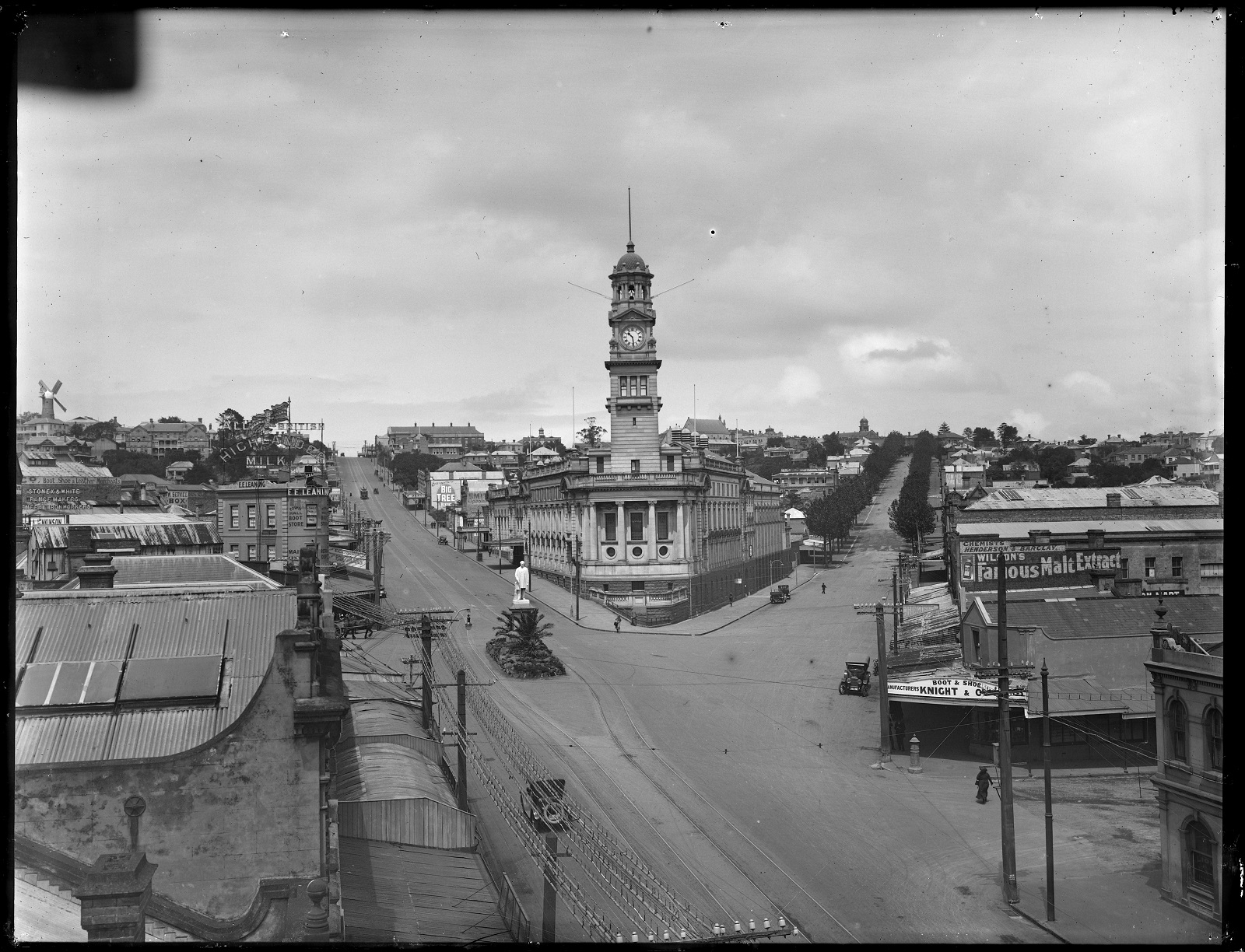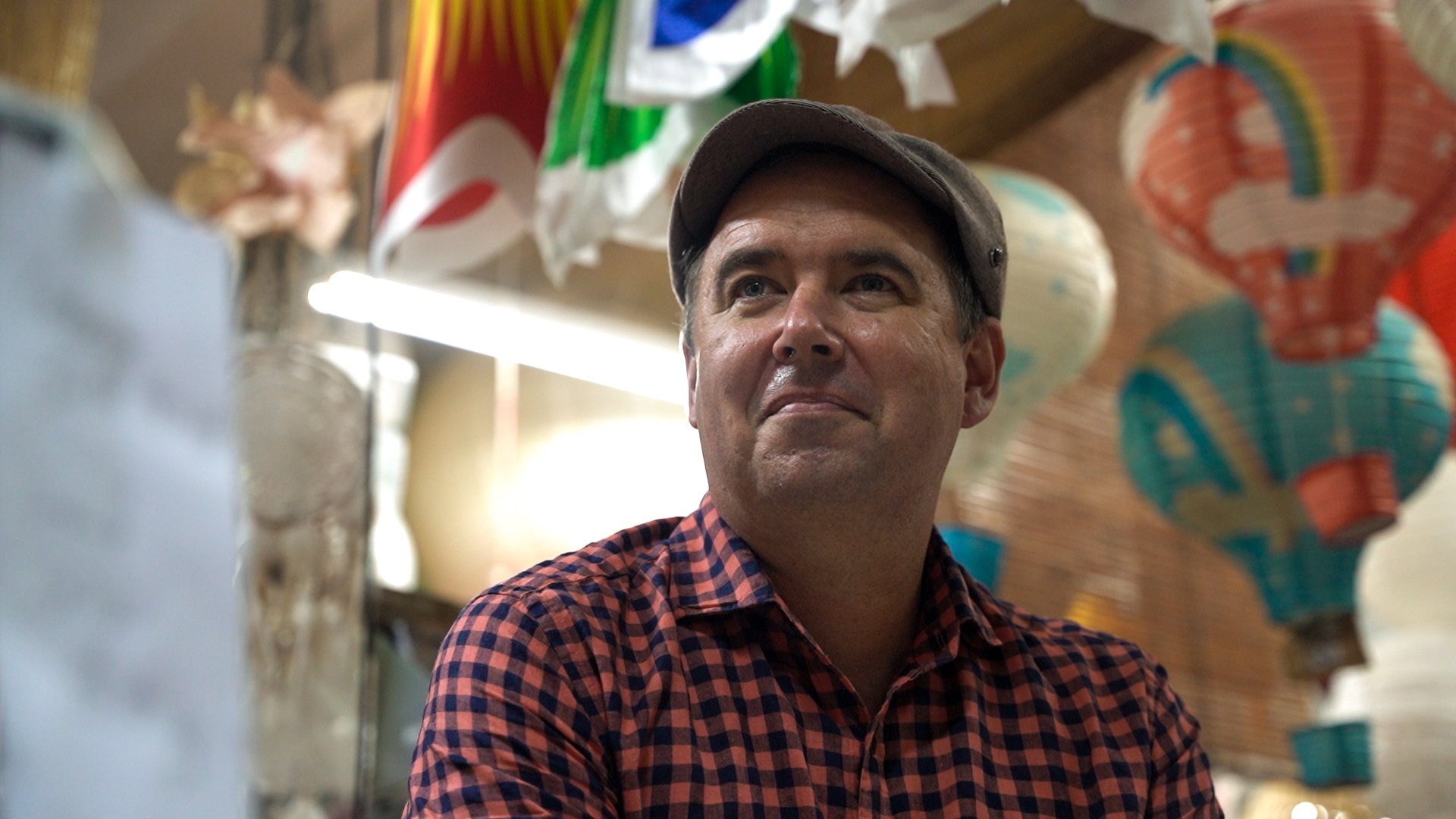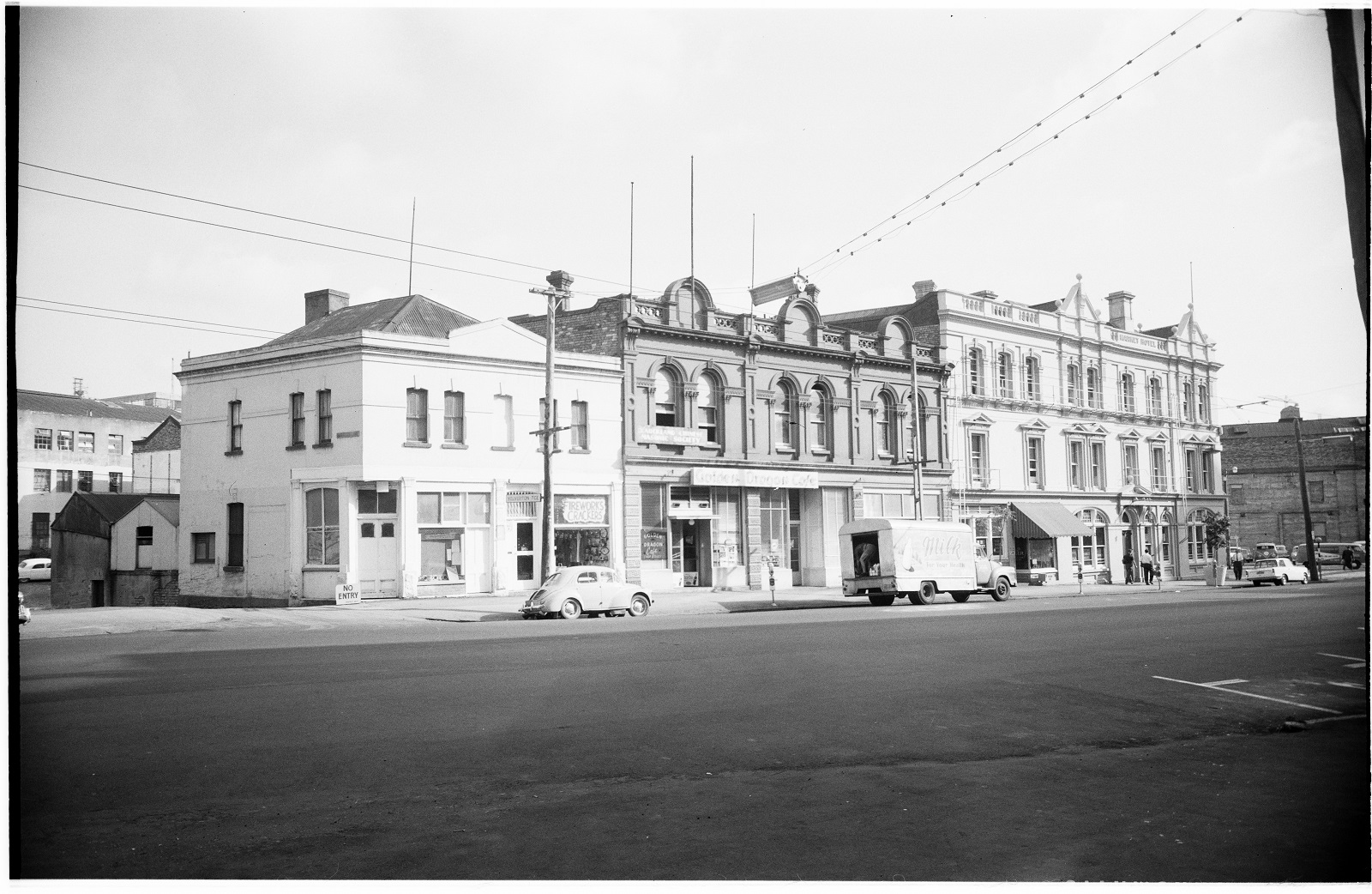Libraries are community spaces that inspire and educate, but did you know that they’re also time portals?
Auckland Council Libraries hosts a range of free heritage, family and local history events across their locations. These are wonderful opportunities to research a family member or learn something new about your local area.
Take, for example, central Auckland’s Greys Avenue. If you amble down it today you’ll see office blocks and apartments. But if you go back almost a century, most of it would be unrecognisable – apart from the London plane trees lining the street.
Known as Greys Street back then – it was renamed Greys Avenue during the 1920s – it ran all the way from Pitt Street to Auckland Town Hall on Queen Street. Villas lined the upper end of the street, while the lower end was home to boarding houses and a small Chinatown area.

A view of Auckland Town Hall in about 1919, with Queen Street on the left and the tree-lined Greys Avenue on the right. The statue of Sir George Grey in the centre of the road is now located in Albert Park. Auckland Libraries Heritage Collections. 1-W1684. Photographer: Henry Winkelmann.
Food historian André Taber says that it was nothing like the Chinatown districts found in the United States, however.
“It was, at most, two stores – Wah Lee and Soung Youeen (which both relocated to Hobson Street in the 1960s and are still there today) – the Chinese Masonic Society meeting rooms, a few restaurants, and a few dozen residents, mostly living in boarding houses owned by Pākeha.”
While small, the influence of Auckland’s Chinatown was huge, as this was the site of some of the first Chinese restaurants in the country. In 1925, Nam King Restaurant at 51 Greys Avenue became the first in New Zealand to advertise chop suey.
“They were actively trying to attract Pākeha customers,” says André. “Whereas previously Greys Avenue had been home to eating houses which had been sign-less and quietly serving Cantonese home-style cooking to Chinese Aucklanders, this new development marked a transition towards serving food aimed at non-Chinese customers”

Join food historian André Taber for a tasty tour through time at his Central City Library HeritageTalks session on 17 May.
A 1937 newspaper review of one of these establishments describes chow mein to the uninitiated westerner as “pale, thin, hay-coloured stuff like spaghetti which has gone in for slimming”.
As part of Auckland Council Libraries’ HeritageTalks series, André will be giving a talk at Central City Library on 17 May, delving deeper into the early beginnings of Auckland’s vibrant multicultural restaurant culture. He’ll share old photos and describe eateries such as the cheap and cheerful Golden Dragon, where diners sat in cubicles with coin-operated jukeboxes, and the more upmarket Chunking Café across the road. Both were demolished – along with the rest of the original Chinatown – by the council in the late 1960s, and later became the site of Aotea Square.
“Chinese New Zealanders have been an important part of our country for nearly two centuries, and I find the story of Auckland Chinese restaurants and takeaways very fascinating,” says André.
So come along, learn some local history, then maybe head to one of the central city’s now numerous Chinese eateries for some fabulous local kai.

This strip of buildings on Greys Avenue was home to several Chinese-owned businesses in the 1940s, including the Golden Dragon Cafe (centre), the Auckland Chinese Masonic Society and Wah Lee’s grocery. Auckland Heritage Libraries Collections, 4-2302. Photographer: J D Richardson.
Attend the talk
What: HeritageTalks: Greys Avenue Chinese Restaurants with André Taber
When: 12-1pm, Wednesday 17 May 2023
Where: Central City Library or join online via Zoom.
Find out more about this event and register to attend on OurAuckland


